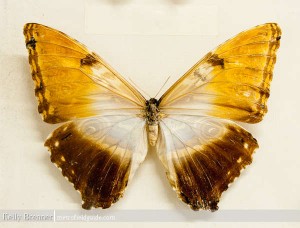
Some butterflies get their color through complex shapes in their wings called gyroids.
How can butterflies help develop faster electronic and optical devices? Through their gyroids of course. Scientists are studying gyroids in butterfly wings in an attempt to better understand this complex shape. A gyroid is a shape that gives some butterflies their color, what is called structural color. The light interacts with these complex shapes, which the scientist describes as similar to swiss cheese, with air traveling in three different dimensions.
What’s that mean for electronics? Electronics function by controlling the flow of electricity by controlling the flow of electrons by letting certain frequencies through while blocking others. Newer technology works in a similar way by controlling the flow of photons, or light. Because butterflies control the flow of light through their gyroids, they are able to block out certain colors while letting others though.
Where can this be used? Insulation for fiber optics is a possibility, which is currently problematic because light can leak out of the fiber optics such as with the fiber optic cables under the ocean that carry phone calls. If scientists could learn to replicate gyroids on a proper scale, they could develop better fiber optic cables.
It’s amazing how much we have yet to learn about the natural world.
Read and listen to the story on NPR:: Butterflies: Science on the Wing





